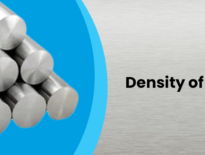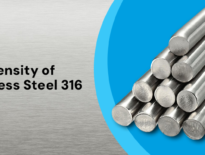18-8 Stainless Steel: A Guide of Properties and Applications
18/8 stainless steel is a widely used grade known for its corrosion resistance, durability, and versatility. Comprising 18% chromium and 8% nickel, it also includes other alloying elements that enhance its properties. This steel is extensively used in food processing equipment, kitchenware, architectural structures, automotive components, and medical equipment due to its excellent corrosion resistance and toughness. Its ability to withstand moderately aggressive environments, high temperatures, and mechanical stress makes it ideal for various demanding applications.
What is 18-8 stainless steel?
18-8 stainless steel, also known as 304-grade stainless steel, is named for its composition of approximately 18% chromium and 8% nickel, with the remainder being iron and other elements. This type of stainless steel includes designations like 301, 302, and 304. Its key characteristics include a chemical composition that provides superior properties, a tensile strength range of 80-200,000 psi for robust mechanical performance, and excellent corrosion resistance, making it ideal for environments that require durability and longevity.
18-8 Stainless Steel Chemical Compositions
| Chemical Composition, % | |||||||||||
| ASTM | AISI (UNS) | C, ≤ | Si, ≤ | Mn, ≤ | P, ≤ | S, ≤ | Cr | Ni | N, ≤ | Product | |
| ASTM A240/A240M | 304 (UNS S30400) | 0.07 | 0.75 | 2.00 | 0.045 | 0.030 | 17.5-19.5 | 8.0-10.5 | 0.10 | Plate, Sheet, and Strip | |
| ASTM A276A/276M | 0.08 | 1.00 | 2.00 | 0.045 | 0.030 | 18.0-20.0 | 8.0-11.0 | – | Bars and Shapes | ||
Properties of 18 8 Stainless Steel
18.8 stainless steel, known for its excellent properties, stands out in several key areas:
Corrosion Resistance: This steel type offers outstanding corrosion resistance, outperforming many in the 400 series. While there are minimal differences in corrosion resistance within the 18-8 types, slight variations in chemical composition can make certain grades more resistant to specific chemicals or atmospheric conditions.
Magnetic Characteristics: One of the notable features of 18.8 stainless steel is its non-magnetic nature. Unlike the 400 series, this property makes it ideal for applications where magnetic interference needs to be minimized.
Hardenability: 18.8 stainless steel can only be hardened through the cold working process. This ability to be hardened through cold working enhances its versatility, making it suitable for a wide range of customized applications in various industries.
Mechanical Properties of 18/8 Stainless Steel
| Mechanical Properties | |||||||||
| ASTM Type | AISI (UNS) | Tensile Strength, (MPa), ≥ | Yield Strength, ≥ (MPa) at 0.2% Offset | Elongation in 50 mm (%, ≥) | Reduction of Area, %, ≥ | Brinell Hardness, (HBW) ≤ | Rockwell Hardness, (HRBW) ≤ | Product | Condition |
| ASTM A240/A240M | 304 (UNS S30400) | 515 | 205 | 40 | – | 201 | 92 | Plate, Sheet, and Strip | – |
| ASTM A276A/276M | 515 | 205 | 40 | 50 | – | – | Bars and Shapes | Hot finished | |
| 620 | 310 | 30 | 40 | – | – | Cold finished, Dia ≤ 12.7mm | |||
| 515 | 205 | 30 | 40 | – | – | Cold finished, Dia. > 12.7mm | |||
18/8 Stainless Steel Material Properties or Physical Properties
Density: 7.9 g/cm³ (Equivalent to 7900 kg/m³ or 7.9 x 10³ kg/dm³)
Melting Point: Approximately 1400-1450°C (2552-2642°F)
Magnetic Properties: Generally non-magnetic, distinguishing it from the magnetic 400 series stainless steels.
Specific Heat Capacity: 500 J/(kg·K) or 0.12 BTU/(lb·°F)
Electrical Resistivity: 720 Ω·mm²/m (Equivalent to 720 μΩ·m)
Modulus of Elasticity (Elastic Modulus): Around 193 GPa (Equivalent to 193 kN/mm² or 193 × 10³ MPa)
Thermal Diffusivity: Approximately 3.8 x 10⁻⁶ m²/s
Thermal Conductivity: Typically 16-24 W/(m·K)
Coefficient of Thermal Expansion: 16-17 x 10⁻⁶/K or 16-17 μm/(m·K)
Type 304 Physical Properties
| Type 304 Physical Properties | |
| Density, g/cm3 (lb/in3) | 7.93 (0.286) |
| Melting point, °C (°F) | 1400-1450 (2550-2650) |
| Specific heat capacity, J/kg·K (Btu/lb ·°F) | 500 (0.12) at 20 °C (68 °F) |
| Electrical resistivity, μΩ·m | 0.72 at 20 °C (68 °F) |
| Conductivity, %, IACS | 2.5 |
| Magnetic permeability | 1.02 (Approximate) |
| Elastic modulus (Modulus of Elasticity), GPa (106 psi) | 193 (28) |
| Thermal diffusivity, mm2/s (in2/s) | 3.84 (0.006) |
| Thermal conductivity, W/m·K (Btu/ft·h·°F) | 16.2 (9.4) at 100 °C (212 °F) |
| 21.5 (12.4) at 500 °C (932 °F) | |
| Coefficient of thermal expansion (CTE), 10-6/K (μin./in·°F) | 17.2 (9.6) at 0-100 °C (32-212 °F) |
| 17.8 (9.9) at 0-315 °C (32–600 °F) | |
| 18.4 (10.2) at 0-538 °C (32-1000 °F) | |
What Is the Other Term for 18-8 Stainless Steel
18/8 stainless steel is also known as Type 304 stainless steel. The naming system for stainless steels is complex, involving multiple factors such as chemical composition, microstructure, and standards set by organizations like the American Iron and Steel Institute (AISI) and the International Organization for Standardization (ISO). Stainless steel grades are usually designated by numbers or alphanumeric codes, reflecting the alloy’s elemental composition and properties. Alloying elements like chromium, nickel, molybdenum, titanium, silicon, nitrogen, and copper determine the specific characteristics and designation of each stainless steel type.
Equivalent Grade of 18-8 Stainless Steel
| 18-8 stainless steel equivalent grade | |||||||||||||||||
| US | European Union | ISO | Japan | China | |||||||||||||
| Standard | Type | Standard | Grade (Steel Number) | Standard | Grade (ISO Number) | Standard | Grade | Standard | Grade | ||||||||
| AISI SAE; ASTM A276/A276M; ASTM A240/A240M; |
304 (UNS S30400) |
EN 10088-1; EN 10088-2; EN 10088-3 | X5CrNi18-10 (1.4301) | ISO 15510 | X5CrNi18-10 | JIS G4303; JIS G4304; JIS G4305; | SUS304 | GB/T 20878; GB/T 1220; GB/T 3280 |
0Cr18Ni9; 06Cr19Ni10 (New designation) |
||||||||
| 304L (UNS S30403) |
X2CrNi18-9 (1.4307); X2CrNi19-11 (1.4306) |
X2CrNi19-11 (4306-304-03-I) | SUS304L | 00Cr19Ni10; 022Cr19Ni10 (New name) |
|||||||||||||
Applications of 18/8 Stainless Steel
18/8 stainless steel, also known as Type 304 stainless steel, is a versatile material widely used across various industries. In the petroleum and chemical industry, it is essential for components that require high corrosion resistance. Metallurgical machinery and the aerospace industry utilize its strength and durability. Food processing equipment benefits from its hygiene and corrosion resistance. Household appliances, hardware manufacturing, and instruments also rely on this stainless steel for its reliable performance.
18-8 stainless steel serves as the foundation for intermediate products like steel sheets, plates, tubes, pipes, bars, flats, rods, and wires. These are further processed into kitchenware, tableware, medical devices, machinery parts, wire mesh, filters, and architectural and decorative metal products. Its combination of strength, corrosion resistance, and aesthetic appeal makes 18/8 stainless steel indispensable in numerous manufacturing processes.
Advantages of 18/8 Stainless Steel
18/8 stainless steel offers several advantages that make it a popular choice in various industries:
- Excellent Corrosion Resistance: It performs exceptionally well in environments with exposure to moisture, chemicals, and corrosive substances.
- High Tensile Strength and Durability: This steel can withstand heavy loads, impacts, and mechanical stresses.
- Non-Porous Surface: Its surface resists bacterial growth, is easy to clean, and minimizes the risk of cross-contamination.
- Aesthetic Appeal: The bright, silver metallic finish remains attractive even after prolonged exposure to harsh environments.
- Versatility: It can be easily formed, machined, welded, and fabricated into complex shapes and products.
- Recyclability: 18/8 stainless steel is recyclable without degradation in properties through multiple cycles.
Disadvantages of 18/8 Stainless Steel
Despite its many advantages, 18/8 stainless steel also has some drawbacks:
- Relatively Expensive: The high nickel content makes it costlier compared to some other steels.
- Magnetic Properties: While generally non-magnetic, it can become slightly magnetic after cold working or certain machining processes.
- Performance at High Temperatures: It may not be suitable for high-temperature applications due to reduced mechanical properties and potential flaky oxidation.
- Maintenance Needs: Regular maintenance may be required to preserve its surface finish and prevent staining or corrosion, especially in highly corrosive or chlorinated environments.
Summary
18/8 stainless steel is crucial in many industries, serving as a foundational material for various intermediate and final products. Its combination of strength, corrosion resistance, and aesthetic appeal makes it a preferred choice for diverse applications.
FAQs
What is 18/8 stainless steel?
18/8 stainless steel, also known as 18/10 or 302 grade stainless steel, is one of the most widely used and versatile grades of stainless steel. It contains 18% chromium and 8% nickel, making it highly corrosion-resistant and heat-resistant.
What series is 18 8 stainless steel?
18/8 stainless steel refers to a type of stainless steel within the 300 series, characterized by its composition of 18% chromium and 8% nickel.
Is 18-8 stainless steel a good quality?
Yes, 18/8 stainless steel is considered high quality due to its excellent resistance to corrosion and durability. It is commonly used in various applications, including marine environments, because of its resistance to acidic conditions, water, and salt. However, it may degrade faster than 18/10 stainless steel, which has a higher nickel content and offers even greater resistance to corrosion.


